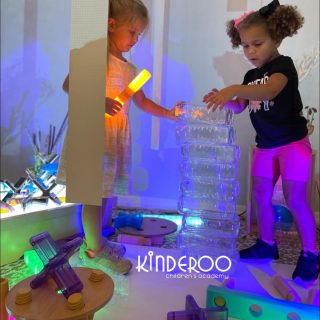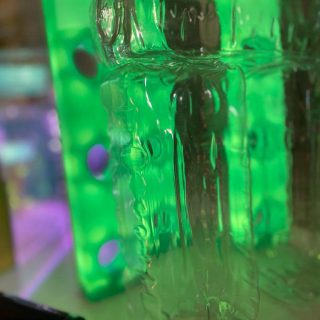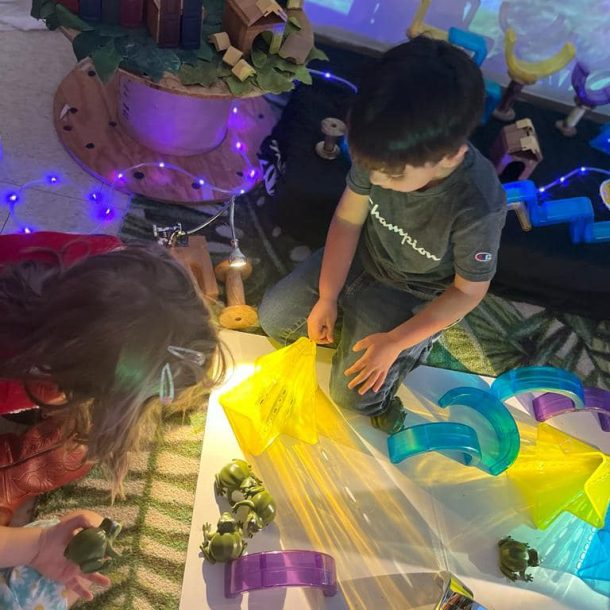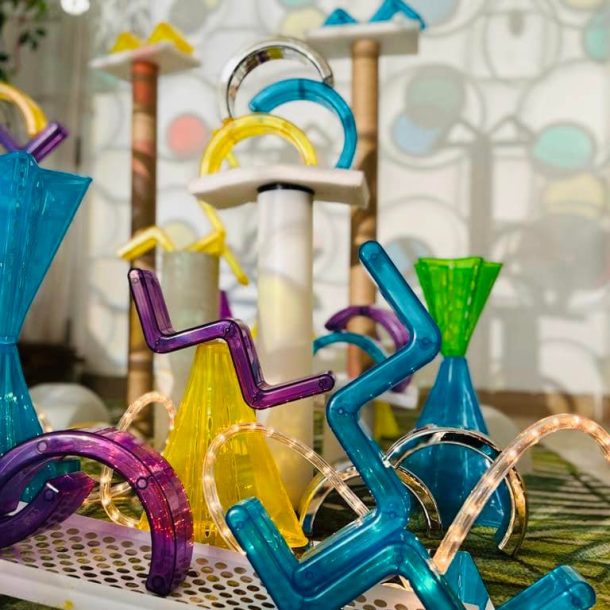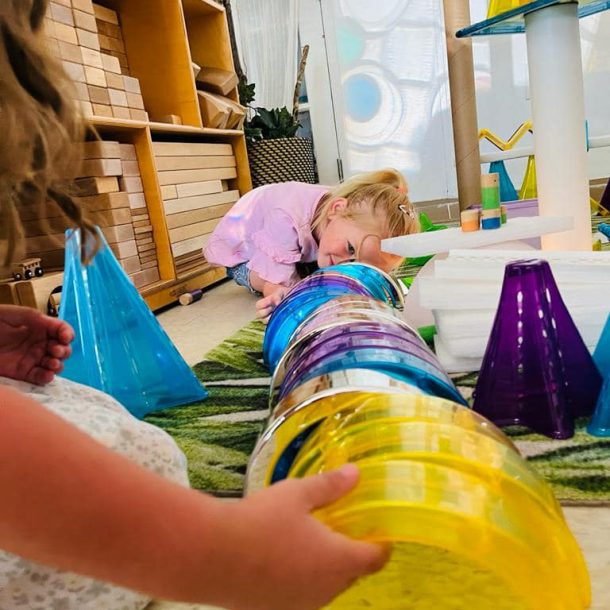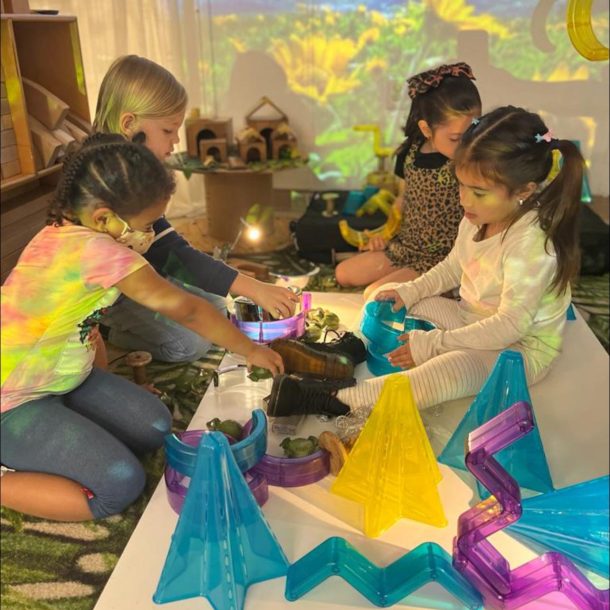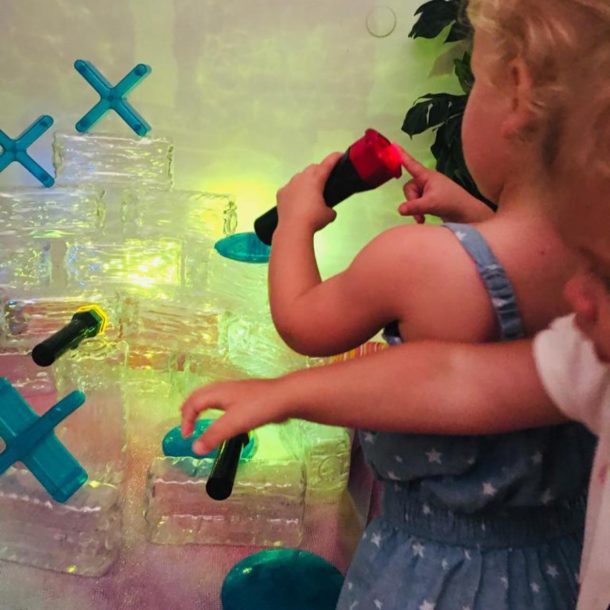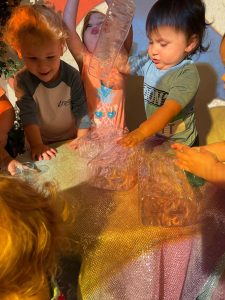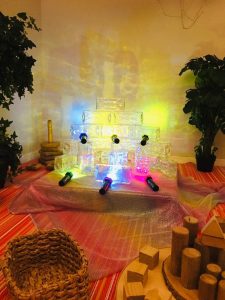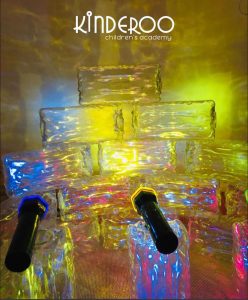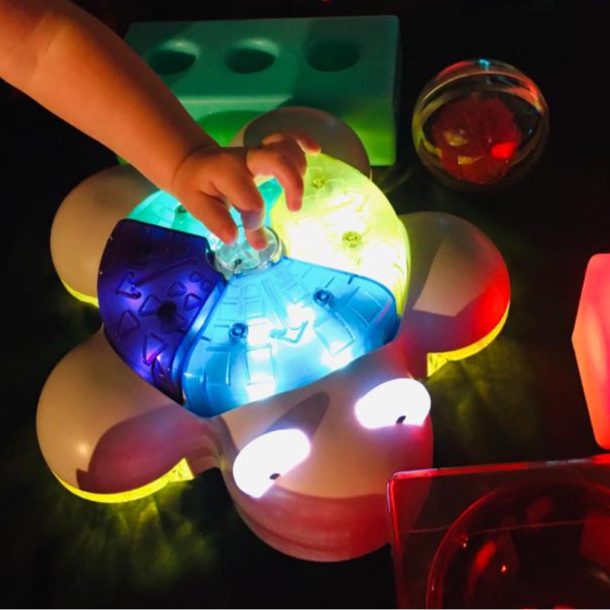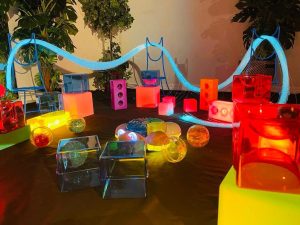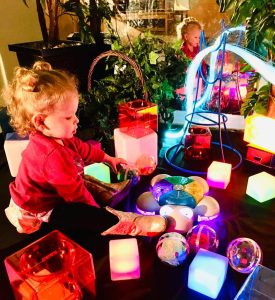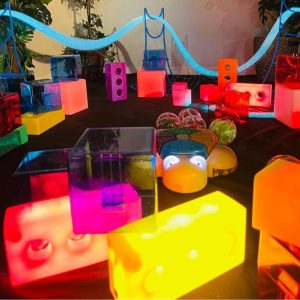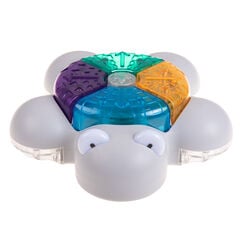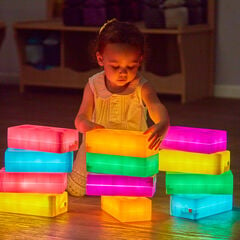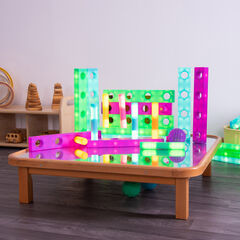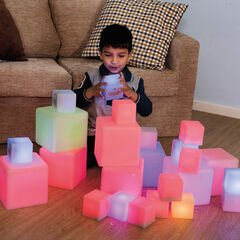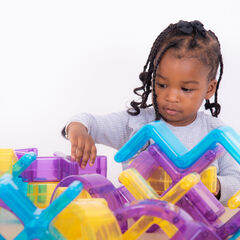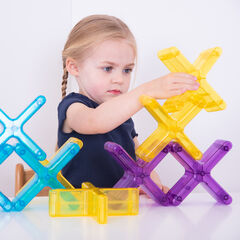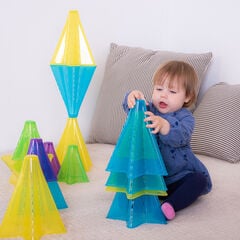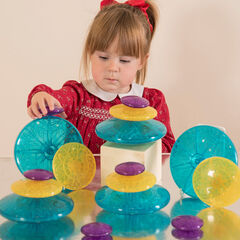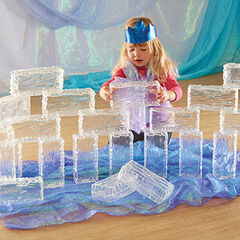Light-Up Resources
Light-up resources are one of our favourite tools for observing children’s creative processes at work. As the children investigate and discover the affordances of these materials, we see how they organise their ideas and develop problem-solving techniques to express their thoughts and goals for their desired outcomes.
Translucent materials and light give children a magical space to discover concepts that are impossible to achieve with commercial posters, worksheets, or flash cards. Their curiosity and wonder can be seen as they explore these materials! Because children have to think and figure out its uses, they are filled with joy and excitement when discoveries are made. There are other benefits to this type of play; can you see them?
Construction Through Schematic Play
Through play, we have continued to build relationships with our friends in the Ponies classroom. Every day we observe the way that they play and interact. Through our observations, we see how they continually repeat certain actions. We understand that they may be participating in schematic play, which is a genuine method children use to acquire learning.
This form of play is observable when our children engage in repeated actions as they explore everything around them, attempting to figure out how things work.
These specific behaviours, or schemas, may vary from child to child. Understanding how children benefit from the opportunities to repeat and practice different actions, we began to give them greater opportunities to develop a variety of skills through this play.
We observed many of our children engaging in building actions. This encouraged us to take a closer look at how most of our children continuously position objects on top of one another, or from side to side.
If we look into the future, these simple actions, from the schema of positioning, carry with them a positive prognosis for our children to acquire skills in spatial orientation, continuing to develop notions of place – such as up, down, left, and right.
Within our construction, we added flashlights to give our children the opportunity to explore one of the most attractive elements that arouses great curiosity, light.
Observations:
- Most of our children played by placing one block on top of another. In doing so, they used translucent blocks and wooden blocks.
- Some children positioned the blocks as a sequence, creating a path of blocks.
- We observed other schemas, such as orientation, when some of our children placed blocks on their body.
- Some were interested in using the flashlights, focusing on the translucent blocks as they were interested in the effect of the light.
- Other children preferred to withdraw from the proposal and play in other areas of the classroom, sometimes watching their friends play from a distance.
Using Glow & Go Bot
We ventured into a unique experience in our classroom where we encountered the magic of early technology, exploring a fantastic new resource that exceeded our expectations and left us wanting to continue having fun and learning – the Glow and Go Bot. This intriguing bot filled our days with many learning moments and unforgettably fun experiences.
The Glow and Go Bot filled both the children and adults with great interest, inviting us to plan strategies to observe their light-filled movements and train our technological skills. Furthermore, there were three stimulating elements that made it particularly interesting: light, sound, and movement. These elements enabled the children to make interesting connections about cause and effect.
To complement the experience, a complete environment was designed with materials, full of light and color on a black background to highlight the colors of the lights from the bot. Through previous observations, we have realised how the effects of light in a dark classroom create a unique sensory effect that invites the children to immerse themselves in the experience before them, using their five senses.
Within our general observations, we could see how the behaviour of the group that participated in this proposal presented some similarities, at least in the first period of participation.
Observations of Play
- Observation and analysis: The children watched and gained a sense of the scenery around them. They began to understand how everything in front of them was wrapped in light, sound, and movement. Seeing what was around, they moved on to the second step.
- Understanding how everything that surrounded them was within their reach, they tried to move forward to touch and feel with their hands.
- They realised that when they touched one of the bot’s buttons, a series of responses began to emerge. They understood the effect of their actions in response to the bot (early coding skills).
Cause and Effect
Entertained by the path of cause and effect, the children became aware of their actions (Cause/effect). The children who participated in this proposal began to understand that pressing a button turned on the light, pressing a button moved the bot, and even played music. It was interesting to see how one of the girls who participated would move as if she were dancing to the music.
Another essential aspect to highlight was the face of astonishment that some of the children showed at the fact of being close to technology, using the impulse that curiosity gives as a tool.
Among the most outstanding actions were the attempts that the children made through trial and error, testing and evaluating how they would finally manipulate the bot to move freely. When the children discovered that, with just the movement of their fingers, they could apply to a button, they dedicated themselves to observing the movement it made, the lights it reflected, and the sound it produced. They then focused on observing the response of the bot and immediately tried again as a repeated action.
Something exciting and worth mentioning is that for the development of social and emotional skills, the bot provided great benefits since the children began to relate to each other, referring to the colours and movements together. They all smiled with joy on their faces, showing empathy for their friends and the bot.
Regarding language, it can be said that this resource brought great benefits, verbally and non-verbally, merging technological skills with creativity and design.
In this experience with the bot, we understood the possibility of approaching technology to enhance and promote the wonderful experience of learning. This resource has all the elements that lead us to an experiential learning experience, full of meaning while simultaneously inspiring our children to develop potential abilities and continue confirming that light makes possible and always invites a world full of discoveries that leave experiences full of magic.
With many thanks to Paola Lopez for writing this article for us.
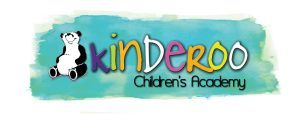
Paola Lopez is the Founder & Executive Director at Kinderoo Children’s Academy, Inc. Kinderoo Children’s Academy is a state-licensed and -accredited Gold Seal Preschool and Toddler Early Learning Center serving children ages 12 months-5 years of age. They offer full and part-time school-year programs, drop-in care, and both summer & winter camps. Their high-quality environments for young children enhance development and lay the groundwork for happy, healthy, and productive futures, and their teachers provide authentic experiences that are relevant to children’s daily lives.


